Many thanks to SWLing Post contributor and political cartoonist, Carlos Latuff, who shares the following guest post:
ETHIOPIA: A WAR THROUGH RADIO
by Carlos Latuff, special for The SWLing Post
We just entered 2022 and the civil war in Ethiopia has already completed 1 year. On the one hand we have the Tigray People’s Liberation Front (TPLF) guerrillas from northern Ethiopia and its allies, and on the other hand we have the armed forces of Ethiopian government and its allies. The dead are piling up, accusations of war crimes from both sides, local and international political interests at stake, and no perspective for a peaceful solution. Without going into the reasons for this new war in Ethiopian territory, I’d like to focus on the use of radio waves by both parties of this conflict.
I monitored shortwave broadcasts from Ethiopia and to Ethiopia between October 21, 2021 and January 4, 2022. The receivers were Tecsun PL-606 and XHDATA D-808, using both the telescopic antenna and a long wire. In all cases, listening was carried out in Brazilian cities.
The monitored stations were:
Dimtsi Weyane (17750 kHz)
Dimtse Wegahta Tigray (15340 kHz)
Raadiyoonii Dirree Shaggar (15330 kHz)
All are clandestine stations of opposition forces, transmitting from Issoudun, France, to Ethiopia.
Oromiya radio (6030 kHz)
Amhara Radio (6090 kHz)
Both are stations linked to the Ethiopian government and broadcasting from Ethiopian territory.
BBC News in Tigrinia language (12065 kHz), broadcasting to Ethiopia and Eritrea from Al Dhabbiya, UAE.
As a way of documenting this conflict, I produced videos containing shortwave audio clips, followed by illustrated reception reports.
[See gallery of Carlos’ illustrated reception reports below.]
In Tigray and Oromo, regions where opposition forces are concentrated, communications were cut by the government, making the radio the only source of information for the population in those areas.
In fact, not only in Ethiopia, but throughout Africa, especially rural regions, radio is the main means of information.
The use of radio as a weapon is no stranger to Ethiopians. The guerrillas that battled Mengistu Haile Mariam regime, culminating in his overthrow in 1991, used clandestine broadcasts. Today, pro and anti-Ethiopian govt. broadcasters are fighting narrative battles on the airwaves. Some Western mainstream media stations that broadcast to Ethiopia, such as the BBC, are accused by Prime Minister Abiy Ahmed Ali of promoting fake news.
During the period in which I monitored these clandestine transmissions in Brazil, reception was not usually very good, even the signal coming from France. In some cases, nothing but noise could be heard, either because of natural shortwave factors such as propagation, or because of intentional interference (“jamming”) by the Ethiopian government in an attempt to prevent these programs from reaching the territory, which forces clandestine broadcasters to constantly change the time of their transmissions.
Programs are produced in Amhara, Tigrinya and Oromo languages. To translate the audio clips I had valuable assistance from people I contacted via the social network Twitter. Most of the content are news, interviews and opinions. These broadcasts can last for 1 hour, 30 minutes or 15 minutes.
Ethiopian-based broadcasters have a longer transmission time, and in addition to news, interviews and opinions (pro-government), they also broadcast music and fitness programs, as in the case of Radio Oromiya, part of the Ethiopian government’s effort to encourage its citizens to practice regular exercises.
This war that takes place both on land and airwaves dates back to the times of the so-called “cold war” in the last century, and even with all the technology available, such as mobile phones, satellites and internet, radio continues to be used today for information and counter-information purposes, as in the case of the two Koreas, for example.
The good news is that time passes, changes are happening in the world, and radio remains relevant. The bad news is that until the closing of this article, armed conflict in the Horn of Africa continues, and it is my sincere wish that Ethiopia may find a solution that respects its sovereignty and the lives of its people.
– Carlos Latuff, special for The SWLing Post
Gallery: Illustrated reception reports
Carlos, thank you so much for sharing this guest post. I love how your article illustrates that radio is, indeed, a meaningful medium of information and that–much like during the Cold War–we can follow both sides of a conflict even if we don’t completely understand the language. This series takes me back to my earliest days of shortwave listening.
I truly hope both sides find a means of achieving peace this year.

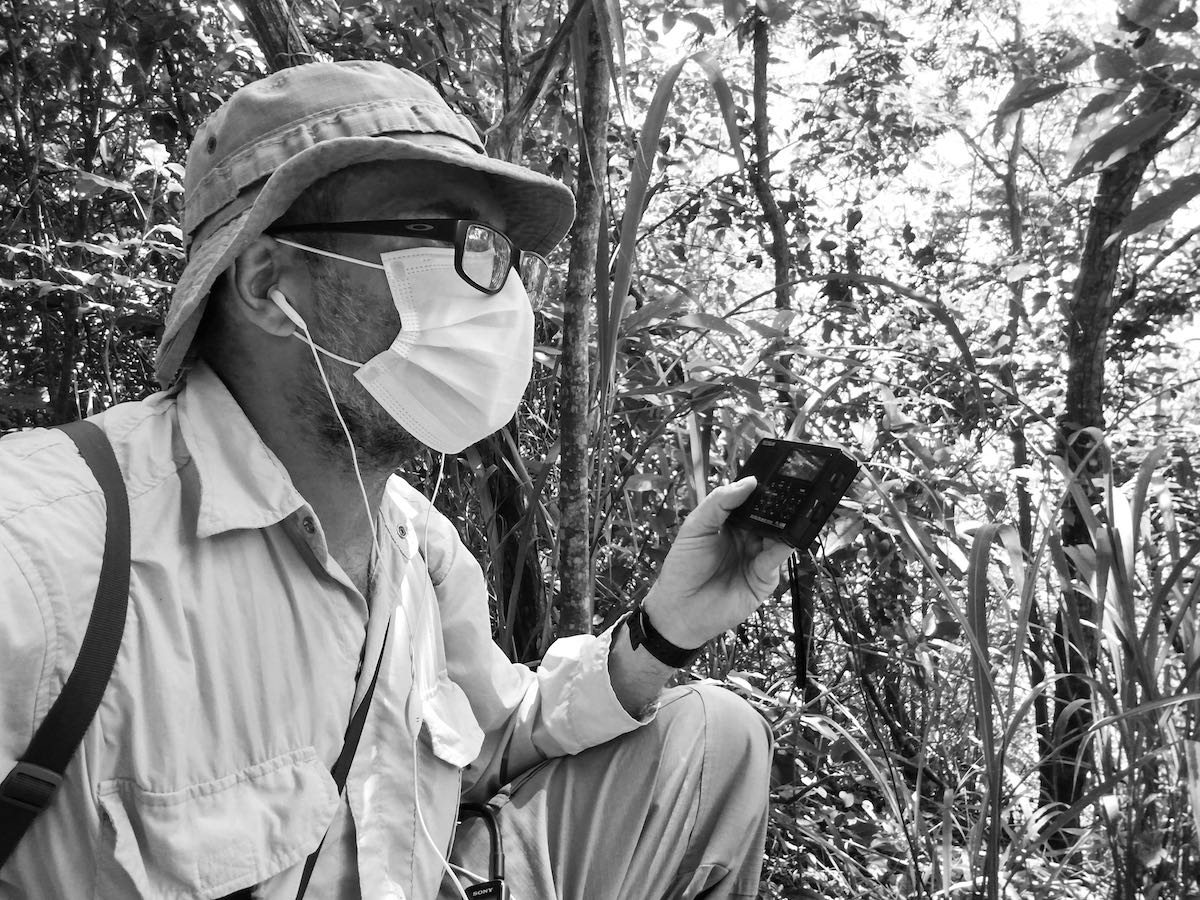
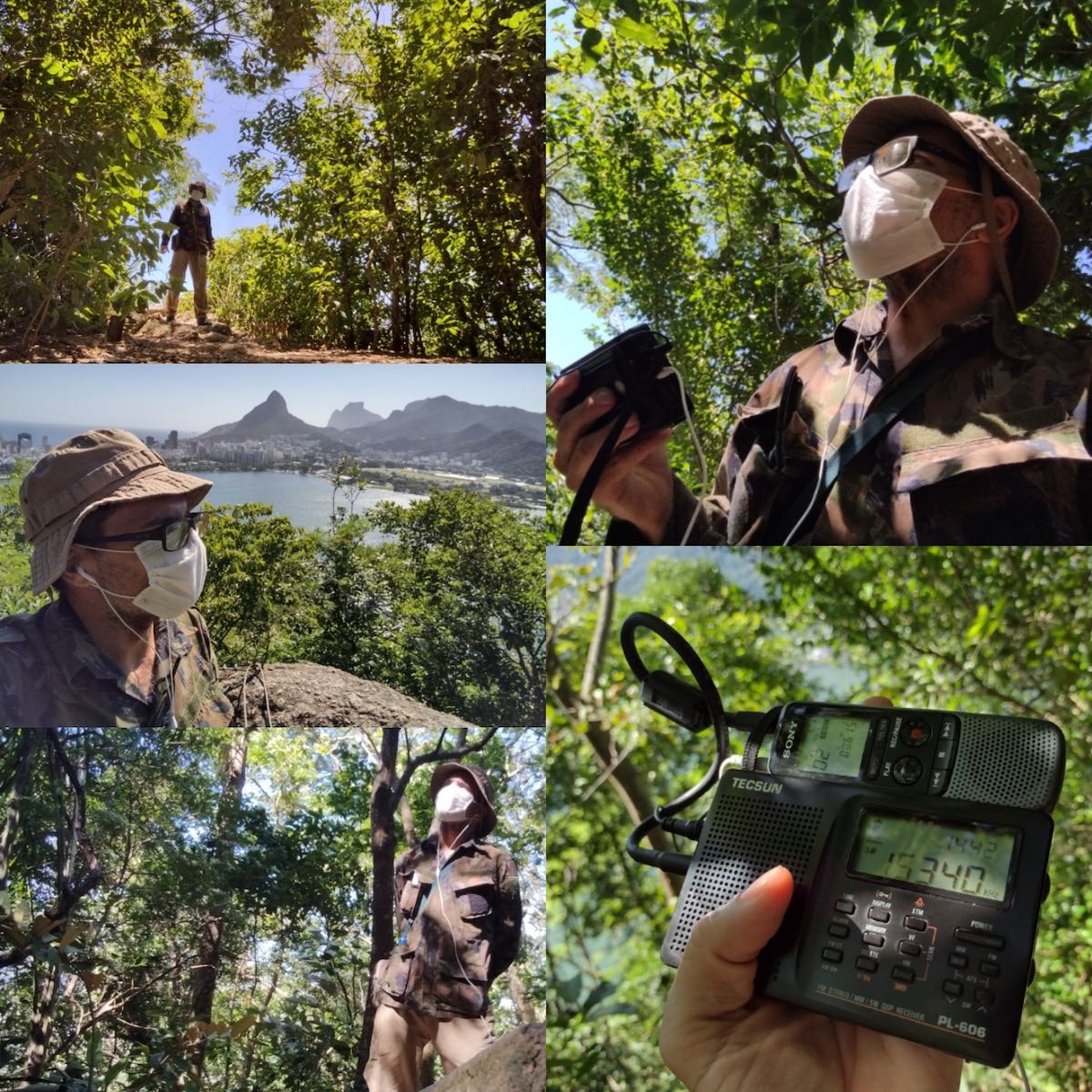
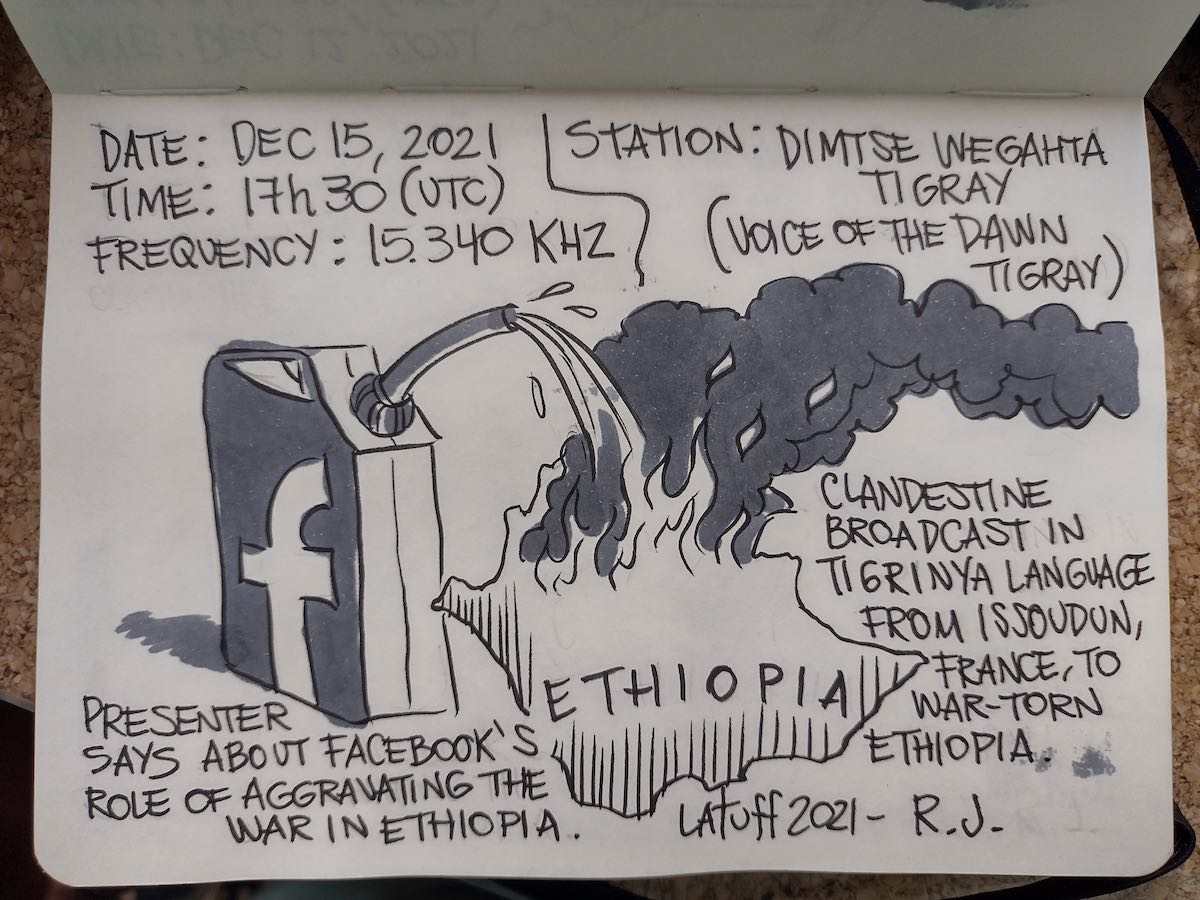
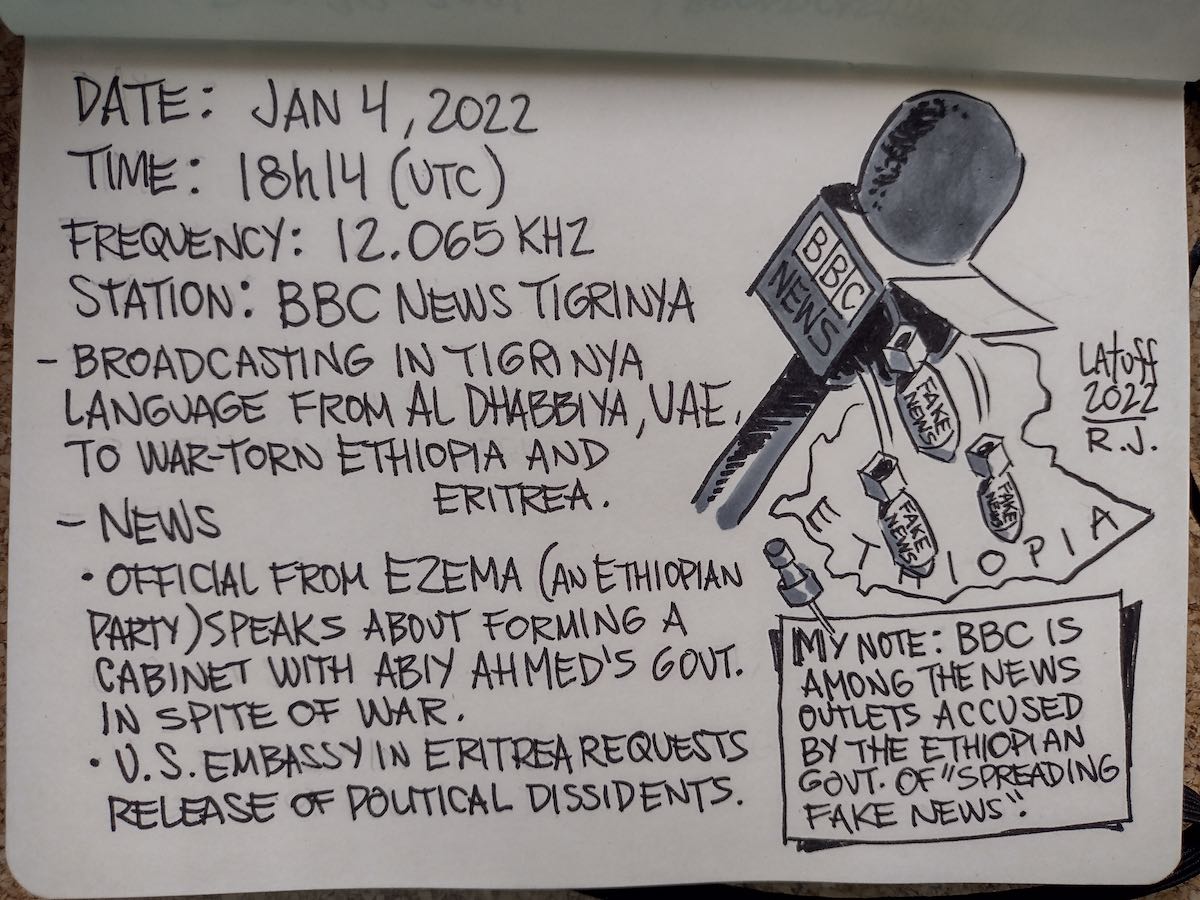
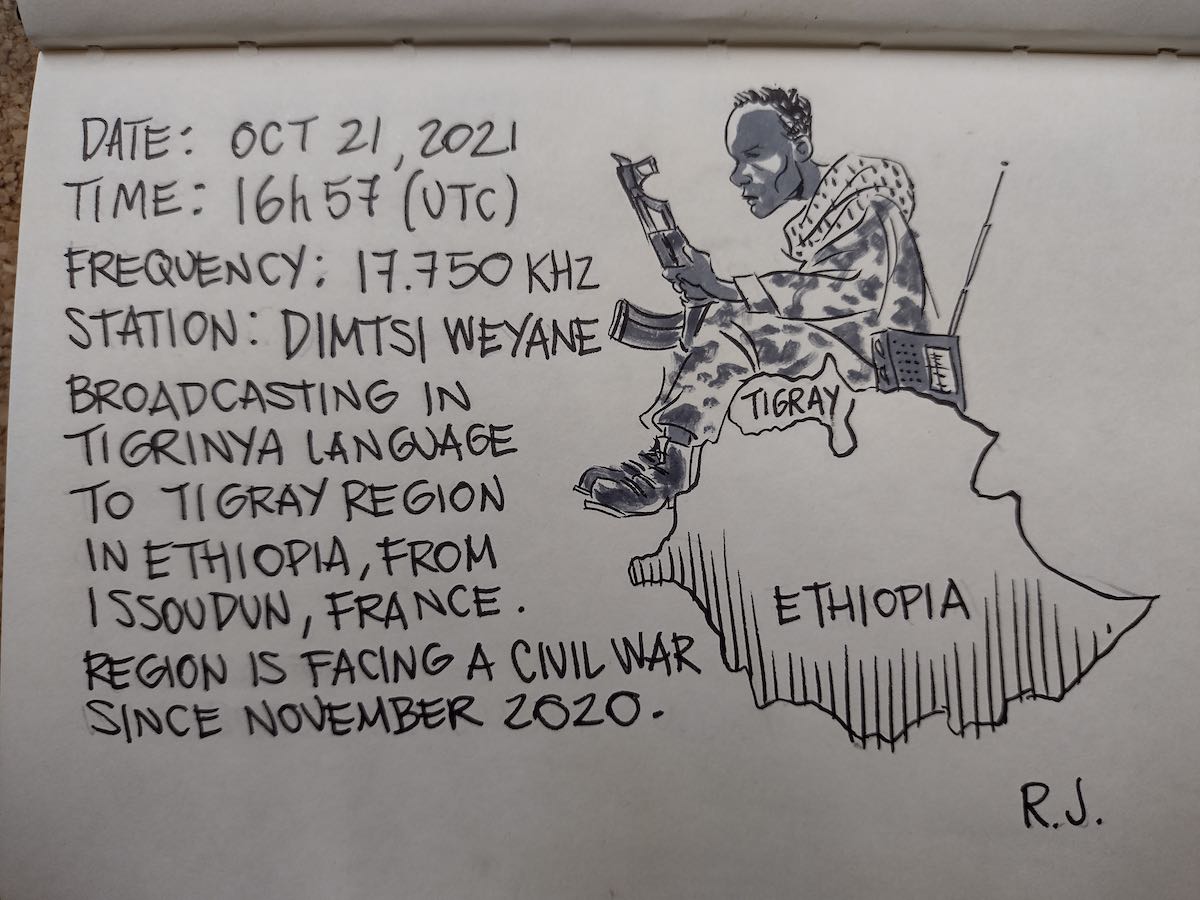
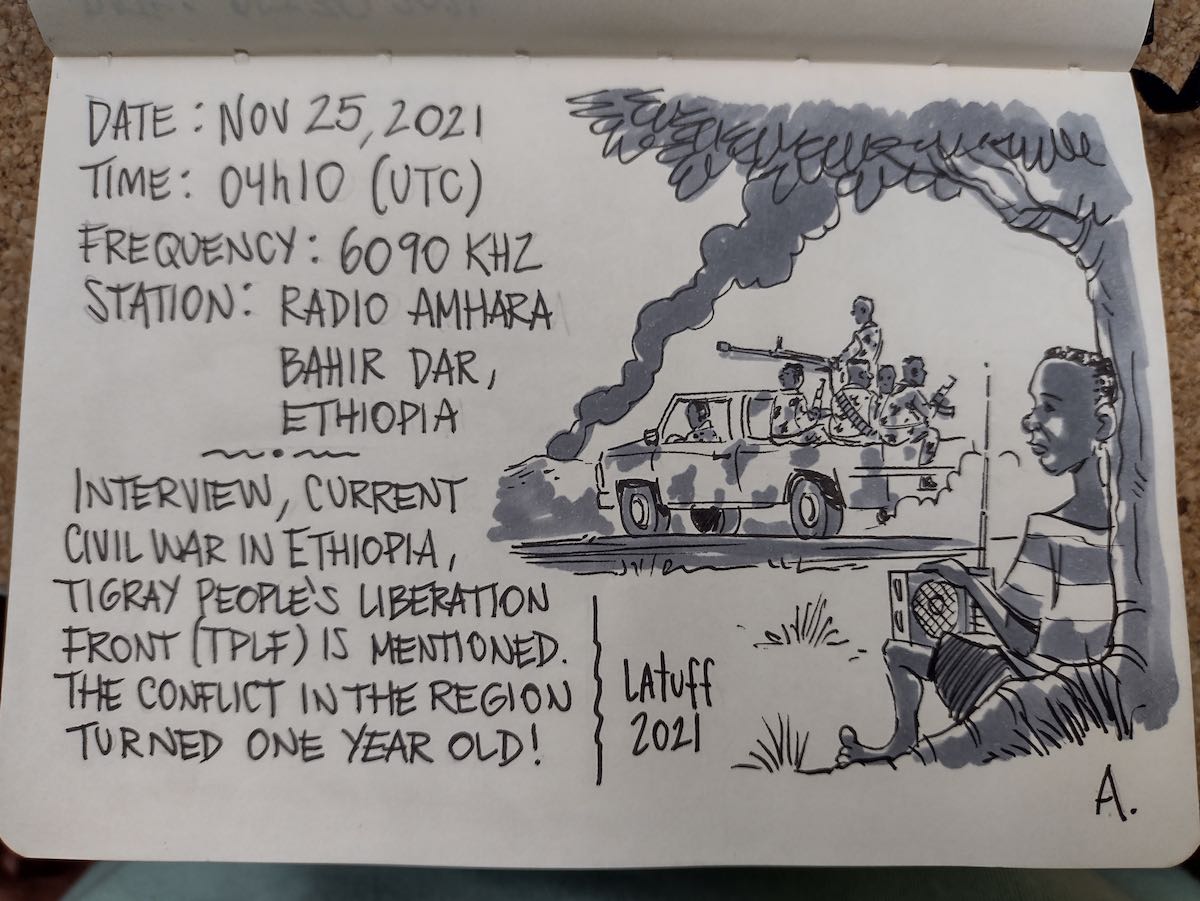

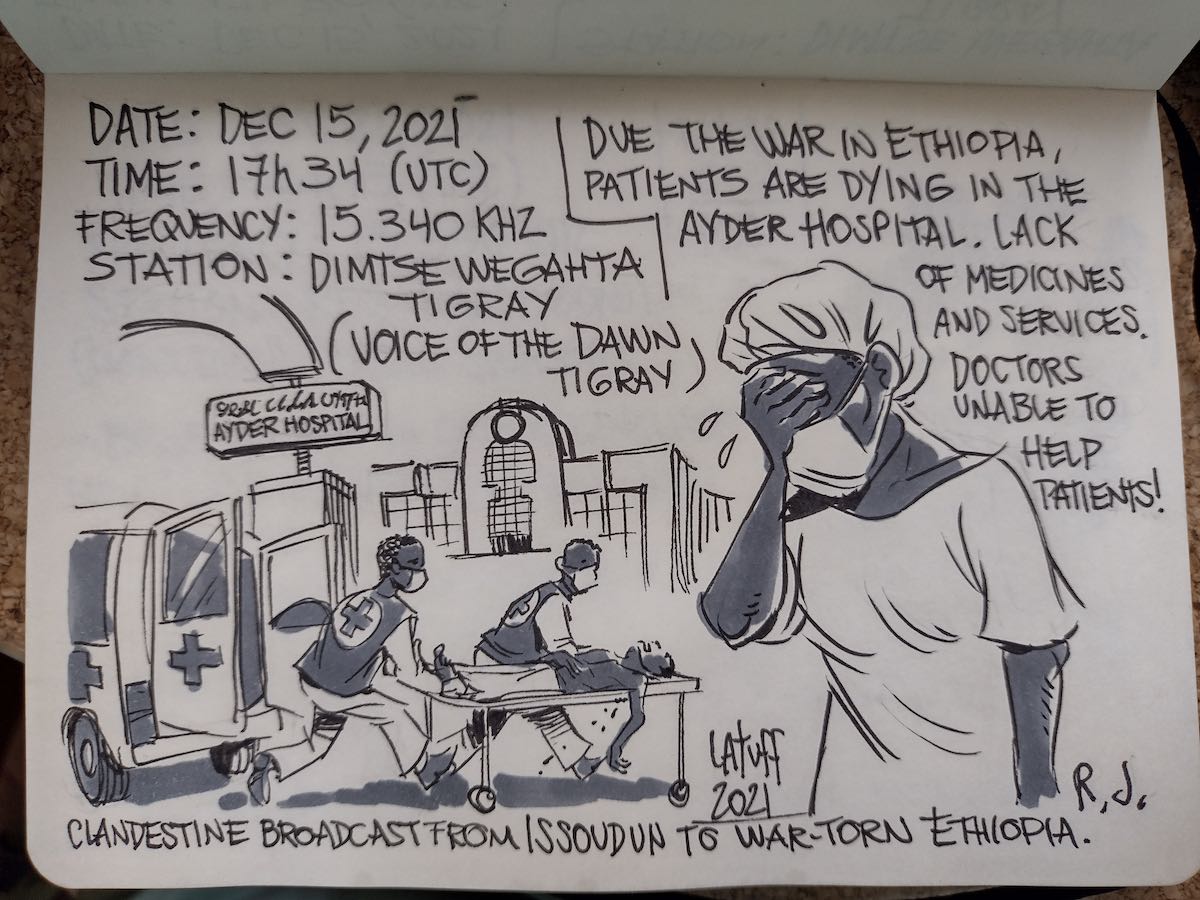
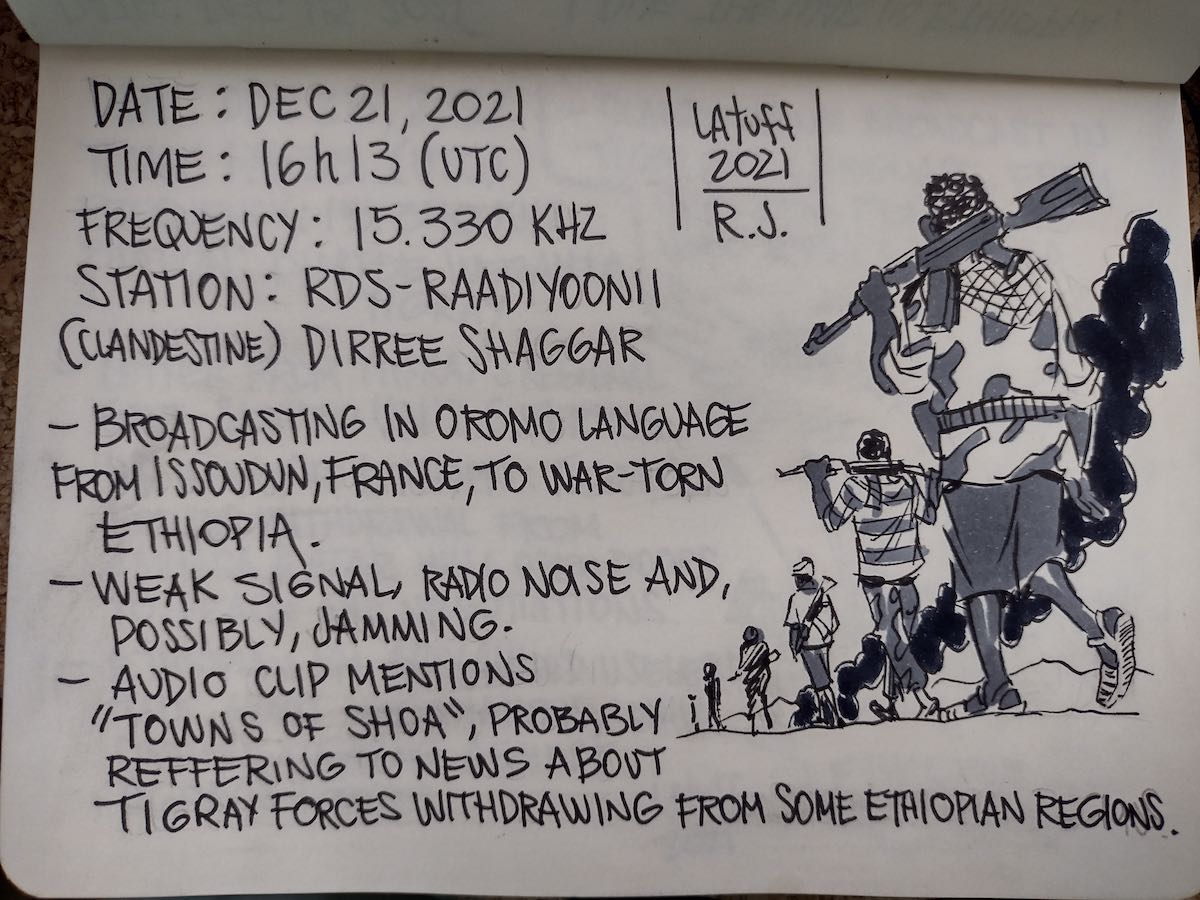
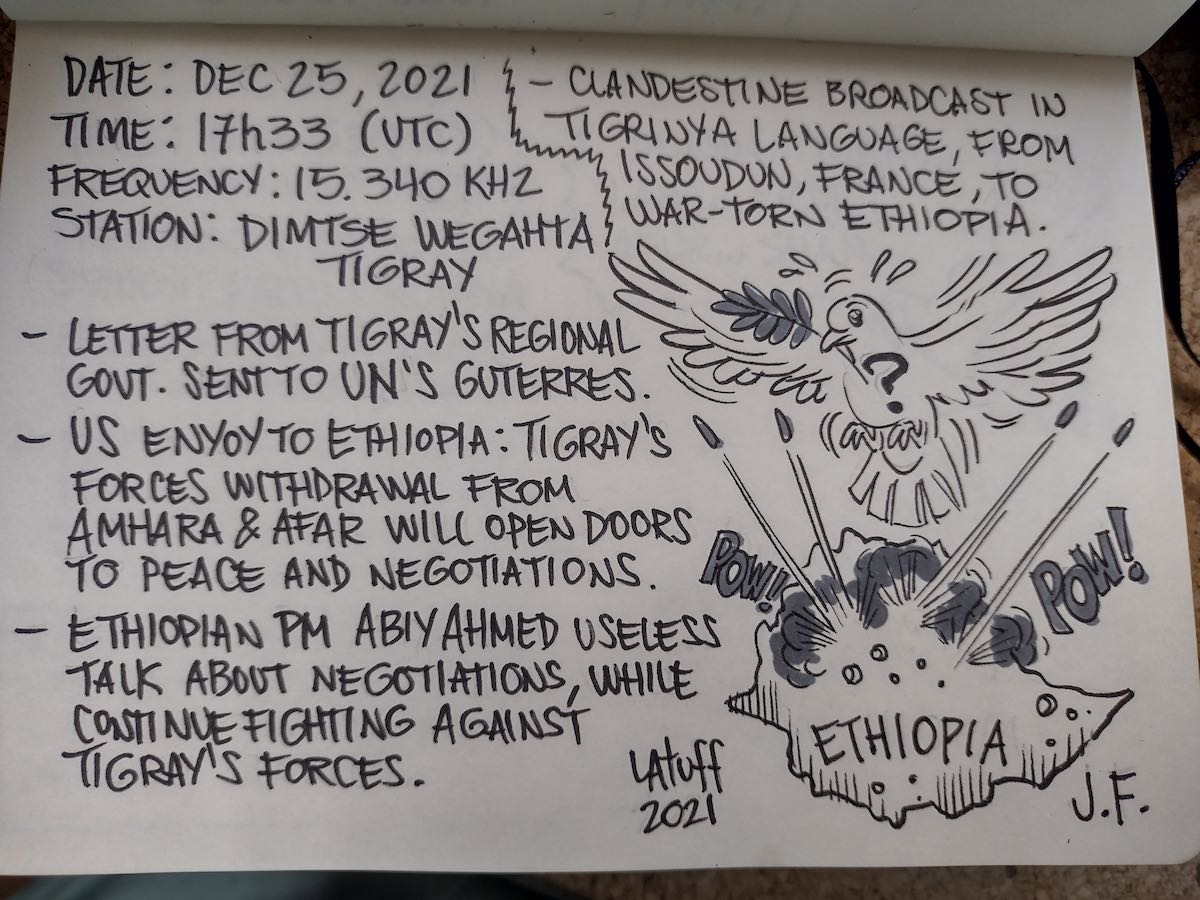

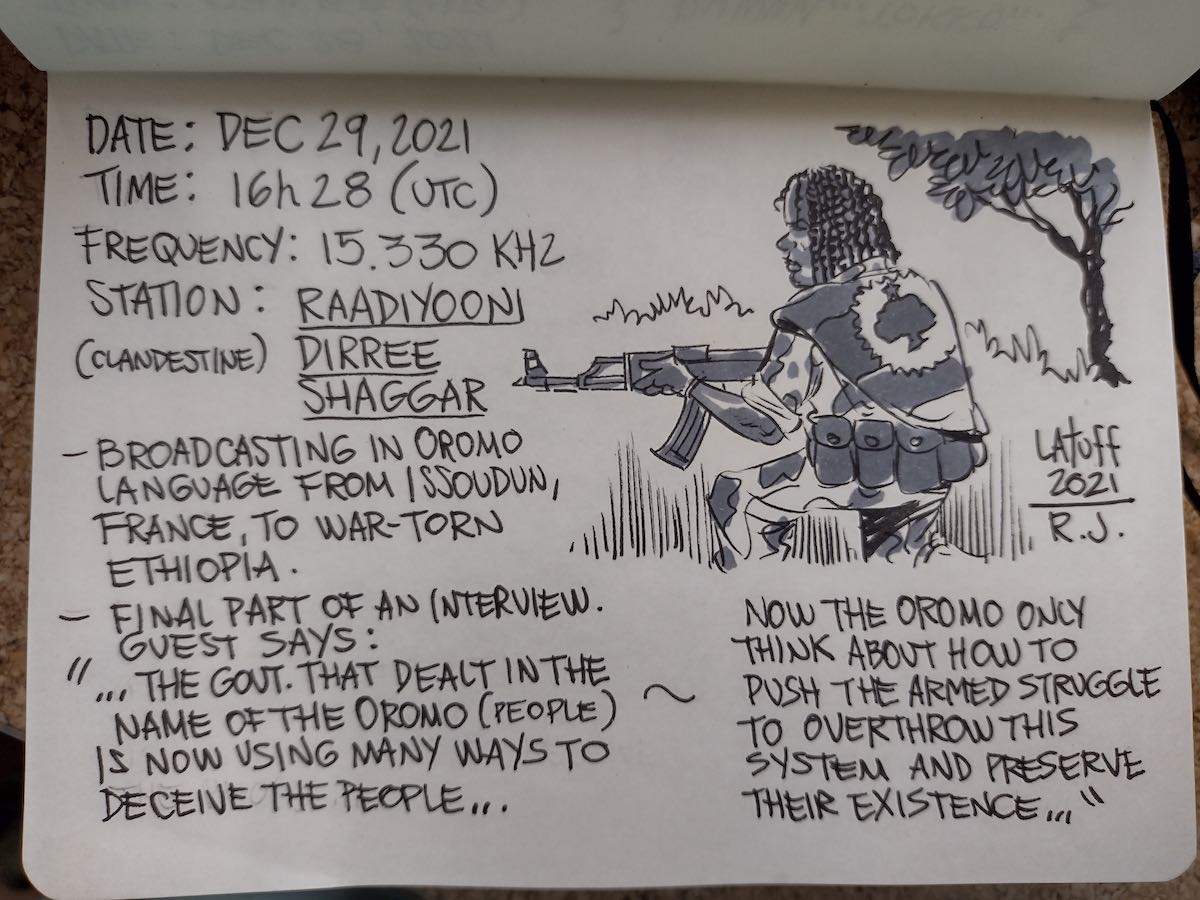

Very nice documentation Carlos!! Love from Bengal, India. Stay healthy and safe.
Amazing! Swling cards with illustrations and important informations. Very cool!
Great job! I live in southern Brasil and I’ve tuned almost all the frequencies Latuff mentioned.
Hi Carlos, bad stuff happens when people sells hearth and soul for money and power; a certain folk once wrote “violence is the last refuge of the incompetent” and I totally agree
Getting back to radio, which antenna did you use ?
Agree. Sad times.